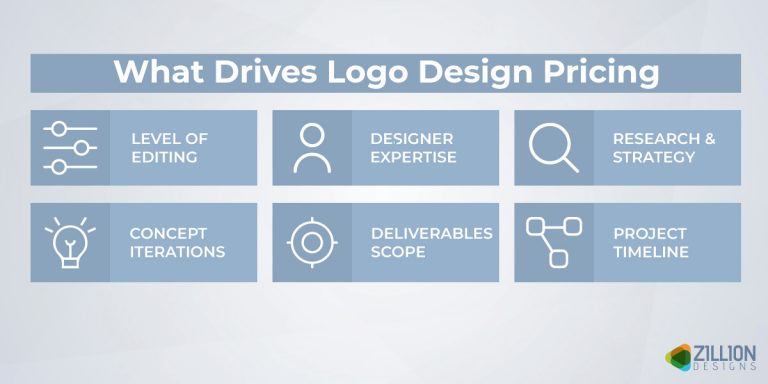Finance is a well-regulated industry and people expect financial firms to show professionalism in business operations. But that doesn’t mean there’s no room to get creative and benefit from new technology.
Particularly, while designing a website for a fintech business you can implement AI functionalities and features to make your website less boring.
AI in Fintech Web Design
If you look at the statistics on this, AI adoption in fintech is estimated to grow in the years ahead. According to Global Newswire, AI in fintech was worth USD 42.83 billion in the year 2023 and it is projected to grow to USD 49.43 billion by 2028.
When discussing fintech websites, an interactive and responsive design can make visitors stay on your site. That’s where an amazing UX design that is user-friendly and engages your customers mingles with AI innovations. Ultimately, the technology helps create a finance or banking website that customers can easily access and love browsing.
As a marketing specialist in the graphic design industry, I have followed quite a few dynamic trends and changes over the last few years. When it comes to UX design applications of AI for fintech websites, in particular, both marketers and designers can leverage the technology effectively. Let’s find out how!
How AI is Reshaping Fintech UX Design
AI or Artificial Intelligence uses data and algorithms to analyze patterns and behaviors. With, technologies like machine learning and robotics, businesses can leverage reasoning, problem-solving, and decision-making.
Here’s how AI and fintech UX design blend to create a seamless customer experience.
AI enhances automation and helps improve efficiencies of tasks in fintech. All financial firms use AI technologies to improve their services like online transactions, security, accessibility, and user experience.
According to Mordor Intelligence, the fintech AI market size is expected to take flight by 2028. This shows room for immense growth for businesses and startups looking to integrate the technology in fintech web designs.
Fintech companies are adopting artificial intelligence (AI) to gather valuable insights into customer behavior and big data analysis.
5 Practical AI Applications in Fintech Web Design
Before you start working on integrating the technology into your website, make sure you get fintech logos designed for greater recognition. Now, let’s discuss some of the key practical applications of AI in fintech website design.
1. Personalized Recommendations
The first step in creating any personalized recommendations, particularly for fintech is to understand your audience’s behavior. This includes analyzing your customer’s financial needs, goals, preferences, and spending patterns. The data you collect will help you optimize user journeys and solve their unique problems.
You can leverage this data and gather insights to feed the AI brain. By doing this you can create personalized recommendations and unique customer experiences like investment options, online payments, savings, loans, and other financial decisions of your customers. Get professional finance logos designed to build credibility and trust.
You can also use the interactive features of AI to create customizable dashboards and alerts. This personalized recommendation is the first practical application of AI in fintech UX design.
Reaching out to potential clients with targeted content shows that your business puts them first and actively listens to their needs. That’s why adding a touch of personalization like addressing your customers with their name in your fintech app can do wonders for you!
Make sure your business is transparent about data collection practices to avoid privacy-related issues.
Example of AI for UX in Fintech Web Design
Robinhood, a fintech company uses AI integrations to give personalized investment recommendations to the customers.
The platform uses an AI-based research platform, Pluto Capital Inc. to track the customers’ trading history and give personalized recommendations based on the historical data.
With the help of Pluto, Robinhood offers personalized investment options and real-time insights to optimize user portfolios and allows customers to make thoughtful decisions.
Image Source: robinhood.com
2. Virtual Assistants and Chatbots
Chatbots are a great tool when it comes to assisting customers with all types of digital transactions. Sometimes people have to make different types of payments or transactions like transferring money to foreign countries and they don’t know what is the right solution for their requirements.
These AI chatbots can resolve all customer queries, send out reminders, and automate their subscription payments, investments, and monthly bills. These tools can help improve user experience for financial clients and turn them into loyal customers.
What’s even more amazing is that you can even train these AI chatbots with prompts. This helps in automating and generating responses exactly how the customers want, answering their specific queries.
No doubt one of the biggest benefits of AI-powered chatbots and virtual assistants is their 24/7 availability. They can respond immediately to all queries which is why users like them so much.
These AI-powered chatbots resolve queries instantly, which as a result increases customer satisfaction and reduces cost. Don’t believe us, well here is the stat to back our statement. According to research done by ChatBots Magazine, chatbots can save up to 30% of customer service costs for your business.
Example of AI for UX in Fintech Web Design
Talking about responsive chatbots, N26 a fintech banking software comes to mind. The fintech platform uses an automated AI chatbot by the name of Neon to assist and resolve various queries and concerns of its customers.
Neon chatbot uses artificial intelligence to understand customer queries and give answers to particular questions based on the data fed into its AI brains.
It offers 24/7 support to help customers in urgent situations. In case you need a detailed discussion on your issue, Neon also offers you an option to schedule a call back from a support agent in emergency cases like account security issues.
Image Source: n26.com
3. Voice and Facial Recognition
One more way in which AI can help fintech businesses protect the privacy and data of their customers is via voice or face authentication. This also saves you the hassle, customers can simply log in to the app with voice activation or facial recognition. When it comes to mobile app development, this can be a key feature to integrate.
This technology provides a good alternative to passwords and PIN codes. With voice and facial recognition, customers can log into bank apps, confirm payments, confirm their identities, verify transactions and account access.
AI-driven voice and facial recognition allow a seamless experience. What’s great about AI technology is customers that fintech companies can even pair and modify these technologies to add more authentication methods for security reasons.
With online financial transactions, your data must be secured and accessible when you need to make payments. AI-enabled voice and face recognition allow you to make sure your financial data is protected and easily accessible with a simple authentication process. Plus voice commands are unique to every user, making it quicker to access the app.
Example of AI for UX in Fintech Web Design
Revolut a fintech company has an amazing app that takes voice and facial recognition features a step further. It has facial recognition for secure login and transaction verification in its mobile app.
Revolut comes with a biometric identification feature Wealth Protection to protect people’s savings in case their phone gets lost or snatched.
To save you from any fraudulent activity in your account, their mobile app has multiple layers of security. You will be asked to set a PIN code and biometrics like fingerprint or facial recognition.
Revolut has AI models for protecting customers from any potential security threats. The platform is continuously updating its Wealth Protection feature to ensure customers’ money is protected.
Image Source: revolut.com
4. Fraud Detection and Security
According to research done by Boston Consulting Group (BCG), financial institutions are 300 times more at risk of cyberattacks than other industries. Artificial intelligence and machine learning can help detect and prevent fraud by analyzing financial payments or transaction patterns.
This makes it simpler to detect any inconsistency or irregularity in the app usage and send immediate notifications so institutions can step in to take necessary actions.
Another advancement in fintech data security is the implementation of AI and machine learning algorithms. These can detect authentic personal information of customers from forged ones by verifying signatures.
Fintech apps and websites can also leverage the technology to help their customers set up additional security measures. You will find options like facial recognition, two-factor authentication, or pattern detection to secure your confidential information.
With the AI race becoming more competitive, many fintech companies are integrating AI technologies to enhance their security measures and detect potential fraud. In the long run, such policies can build credibility and trust in fintech businesses. It could help you create a strong brand identity and attract a diverse clientele.
Example of AI for UX in Fintech Web Design
Radar is a tool by Stripe that helps you fight any credit fraud in your mobile app. If you are wondering how Stripe does that, it’s simple. You don’t need to have an additional setup, it can easily integrate into your payment flow and you can simply start using it.
It also has a built-in checkout tool that automatically incorporates certain buyer patterns from your mobile app. This helps it to detect any odd or unusual payments.
Radar uses this historical data to map customer journeys or paths to predict any fraudulent activities happening in your account. It uses advanced machine learning algorithms for preventing fraud.
The tool can flag suspicious activities, and block unusual transactions in real time. It’s a useful tool to have for businesses that deal with high levels of risks, especially banking services and fintech.
Image Source: stripe.com
5. Automating Documentation Process
Another area where AI can play a role is document processing. With the help of such tools, fintech businesses can optimize financial document processing. The documentation process is crucial for all industries, particularly in fintech banking, insurance, and accounting.
You are required to verify tons of documents at multiple stages such as identity verification or at the time of account opening. Machine learning and AI models can help you automate this boring and tiring paperwork. This can save you the time and effort that you would put into document processing.
One big benefit of AI is that it can extract data from uploaded documents so you don’t have to type in manually over and over. This also reduces the chances of making errors.
Another process that has been simplified with the technology is invoice creation. AI models can streamline this task by extracting all the relevant information from invoices such as dates, invoice numbers, client company details, item descriptions, and amounts.
Since everything works on machine learning, you don’t have to worry about the authenticity of documents. These AI models are designed to verify invoices by cross-referencing them with existing financial records like purchase orders.
Many fintech banking services are introducing user-friendly portals on their apps or websites for customers to easily submit online forms.
The machine-readable nature of these formats allows AI systems to effortlessly detect and process the information, laying the groundwork for streamlined and efficient business operations. Most customers also love the interactive and accessible interface as it makes the form-filling process easy for them.
To create an engaging experience for potential clients, it’s important to understand the role of UI/UX in website development and app design . So make sure you are familiar with the basics before working on your fintech digital platforms.
Example of AI for UX in Fintech Web Design
Bill.com automates the invoicing process and manages accounts payable. The traditional accounting process requires inputting data manually on paper like paying bills with cheques, dealing with payment receipts, and keeping records in ledger books.
The AI integration system in Bill.com allows it to extract data from invoices and cross-check it with purchase orders, and yes it’s automated! This ensures your record-keeping is accurate and also you don’t need to spend days on data entry.
Bill.com has a tool by the name Bill AI which can be a great help for small businesses as it reduces human error while inputting confidential data on documents like payment slips, purchase orders, or invoices.
What’s great about this AI tool is that it can learn your preferred data entry method over time the more you use it. This will also streamline your workflows as you can teach the AI to do the work just how you want to.
The AI can extract your payment slip or invoice details like due date, invoice number, vendor, amount, and vendor or client details.
Image Source: Bill.com
Wrapping Up
The fintech industry is on the boom and the only way to get noticed in such a competitive market is to think out of the box. One of the ways you can stand above the big players in the finance and banking sector is by adopting AI and machine learning functionalities to make your website or fintech app interactive and less mundane.
Creating an appealing website for a fintech is not about going all fancy with the UX design, it’s about upholding professionalism and showcasing credibility and authority.
In this blog, we have laid out the foundation of the basic AI features that you need to implement in the UX of your FinTech web design. Use this article as a checklist, if your website is lacking any of these features then you need a serious revamp.
The post 5 Practical UX Design Applications of AI in Fintech Websites appeared first on ZD Blog.





